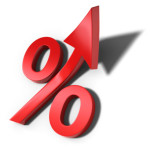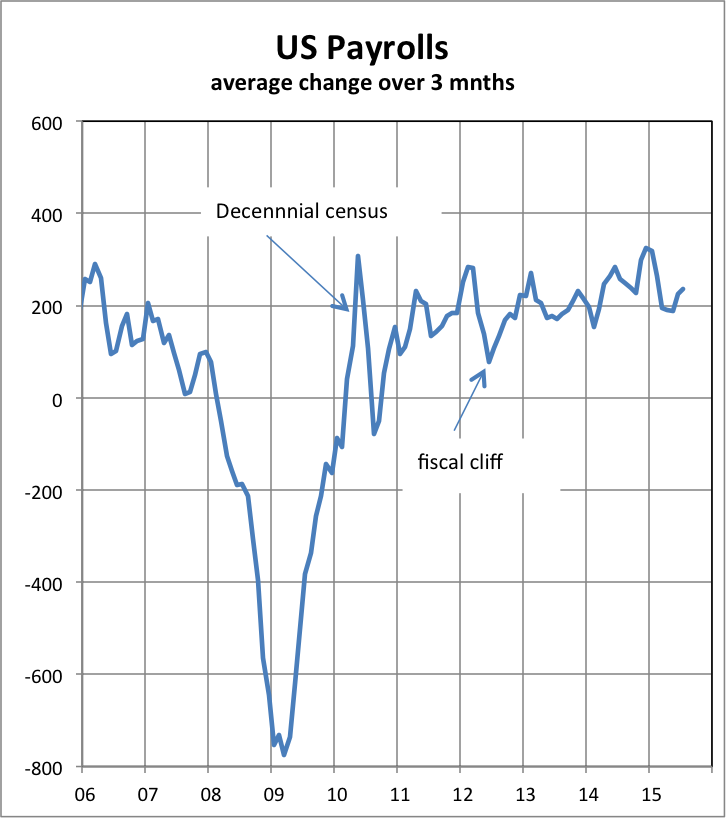 Since the end of 2008, the average fed funds rate has been just 0.13%. This extraordinarily low bank rate has been necessary to undo the damages caused by the GFC. But, obviously, it was never meant to be permanent. And as the US economy has recovered, so have we moved closer to the point where interest rates will have to rise. The most recent US labour market data confirmed that employment was rebounding after the weather-related slump in Q1 (see chart below) making a September rate rise more likely.
Since the end of 2008, the average fed funds rate has been just 0.13%. This extraordinarily low bank rate has been necessary to undo the damages caused by the GFC. But, obviously, it was never meant to be permanent. And as the US economy has recovered, so have we moved closer to the point where interest rates will have to rise. The most recent US labour market data confirmed that employment was rebounding after the weather-related slump in Q1 (see chart below) making a September rate rise more likely.
 Rates are likely to rise for two somewhat different reasons.
Rates are likely to rise for two somewhat different reasons.
The first is that the current extremely low fed funds rate is abnormal, designed to reverse the deepest and longest downturn since the Great Depression. On this accounting, rates need to rise because extreme measures are no longer needed.
The second is that ongoing economic growth risks a rise in inflation. This is a much less convincing reason. Despite some earlier signs that inflation was drifting up, the evidence is that there is no inflation pressure in the US. Indeed, global deflationary forces are driving down commodity prices, significantly, the oil price, and moreover, there are few signs that low unemployment is driving rapid wage growth. True, some surveys suggest wages might grow a little faster over the next year, but any acceleration in wage inflation is likely to be modest.
So if we go back to the “return to normality” argument, where should the cash rate go to? The rough rule of thumb is that neutral monetary policy should set the central bank discount rate at about the growth rate of nominal GDP (i.e., GDP before the effects of inflation have been stripped out). Currently in the US, that would be 3.5 to 4%. But even though the US economy has normalised, the rest of the world has not. And everywhere debt levels, private and public, are very high. Indebted economies need lower than normal interest rates, because the interest payment burden is higher.
The first step by the Federal Reserve Bank will be to raise the fed funds rates from somewhere between 0 and 0.25% to a minimum of 0.25%. Even though history suggests rates should ultimately reach 3.5 or 4%, any increases from then on will be slow and cautious, because there is no inflation pressure, because the US is the only world economy so advanced along the economic recovery road, and because excessive debt remains a problem.